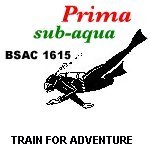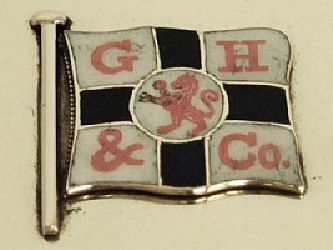
 |
Issue 22 January 2010 |
| Off-Gassing... | |
| (Web Version) |
Welcome to the first issue of the New Year.
| The Joys of Dozzi |
|
Diving continues despite the weather—we have already had our first sea
dives of the year and the joys of Dosthill were explored by those
intrepid (or mad) enough to go out in freezing temperatures. The sun was
out, the water temperature was a balmy 6 degrees, and the ice cream
headaches only lasted for a few seconds. Visibility was about 10 metres
and it was absolutely teeming with fish. Cold weather diving does have
its advantages, as long as you are sensible, so put an extra pair of
socks on, or use the thermals and of course remember that with extra
layers, you will need extra weight. Be aware of cold creeping in— once
it has a grip everything becomes much more difficult and reaction times
slow, so have a fun dive then get out once you start to feel that nip in
the extremities. Make sure you have plenty of layers to put on
afterwards, including silly hat and gloves that look suspiciously like
sheep, and hand-warmers are the best invention ever. Then it’s off to
the welcoming warmth of the pub. What more could you want on a Sunday?
|
| Wreck of the Month |
|
The Volnay Coordinates: 50°4'15"N 5°4'1"W Description: 4609 ton steamship  Depth: 18 - 21 metres (60 - 70 feet) Visibility: 4 metres (13 feet) The Volnay was a ship of some 4610 tons owned by Gow, Harrison and Co. She was homeward bound from Canada, and part of her cargo consisted of much needed ammunition for the troops fighting the Great War in France. When the convoy from Montreal broke up at Barry in early December, 1917, Captain Henry Plough followed his orders and took the 4609 ton Volnay and her lethal load of 18-pounder shrapnel shells and more cheerful cargo of tinned meats, butter, jam, coffee, tea, cigarettes, peanuts and potato crisps round Land's End, heading for Plymouth. He zigzagged as the Admiralty had ordered, though he was well inside the mineswept channel. Even so, when two miles east by south of the Manacles at 12.45 am on Friday 14, the 385ft Volnay hit a mine laid by a German U-boat. Captain Plough and his crew were lucky. Though the mine had blown a hole into No 1 hold on the starboard side, the shells stacked in there did not explode. In the dark it was difficult to see how bad the damage was, but the engines were still running, so the captain set course for Falmouth. He soon realised he would not make it. The bow was dipping further and further down. He headed for the nearest land, but was less than half a mile away in Porthallow Bay when the Volnay lurched to port, came upright again and then started going down by the bow. All aboard abandoned ship safely. Next day the weather worsened and an easterly gale finished the job. Cases of coffee and tea, tins of meat, butter and jam and cartons of cigarettes were piled 2m high on Porthallow beach. The residents of the Lizard had an unexpected Christmas bonus! Even when dived on springs there is hardly any current on this wreck, making it a straightforward dive. A lot of the wreck has been flattened, although not as much as some of the other wrecks in the area and it is still possible to locate the boilers and distinguish the keel. The silty seabed prevents you from doing much in the way of rummaging amongst the wreckage, as clouds of silt will immerse you in seconds. However, it is still possible to find the lead pellet shells on the wreck if they have been uncovered by the tide. There is quite a bit of fish life on it including bib and wrasse and a lot of sea fans. The Volnay is two minutes north from Porthkerris Cove. |
| Tips for a "cool dude" |
|
Frozen Regulator Free Flows The water and air temperatures are reducing so the risk of frozen regulator free flow is increasing. Guidance on Free Flow Regulators in Cold Water Fresh water sites can often be close to freezing, even outside the obvious winter period. This often poses the threat of a free flow. Incidents resulting from free flows cannot be completely avoided but they can be reduced if a few basic guidelines and procedures are followed. What can cause a free flow to occur? When air flowing from a diving cylinder is subjected to dramatic reductions in pressure (a change from 230 bar to around 10 bar) by the regulator first stage, it loses a lot of heat. If the surrounding water temperature is cold (around 5oC or less) this will reduce the temperature still further. The very cold air caused by such temperature drops in each stage of the regulator can cause any water droplets within the mechanism to form ice crystals, which in turn can cause a free-flow. Modern down-stream valves will freeze open rather than shut, but, if they freeze, a free-flow will always be the result. Divers are trained to manage free flow situations in basic dive training. Cold Water Diving Do's Beware that water colder than 8 degrees can cause regulator icing Use an EN 250 cold water rated regulator Keep your regulator out of the cold prior to diving. Breathe gently during the dive Keep your regulator dry between dives. Practise breathing during an underwater free flow Cold Water Diving Don'ts Leave your regulator in the car overnight Breathe heavily through your regulator in air prior to diving Inflate an SMB or lift bag from your alternate air source Do unnecessary deco diving Dive deeper than you have to Practice free flow regulator drills and the use of redundant air supplies for such instances. The use of a redundant air supply such as a pony bottle and regulator, or an additional first and second stage mounted onto a Y-valve should provide reliable source of additional breathing gas when a free flow occurs. • Ensure all alternate air source systems are in plain view and conspicuously marked allowing access at all times. • Discuss the in water procedures and techniques that should be used when dealing with this situation and clearly agree with your buddy on the action to take in each case. Remember it is possible to breathe off a free flowing reg, you have all practiced it in your training. |
| Creature of the Month - Wolf Fish |
|
KNOWN HAUNTS Rock crevices, boulder holes, mixed sea beds.
|
|
Thank you to everyone for their contributions and comments and if you have anything that you would like to add to the newsletter, let us know by 15th February so it can be included in the next issue. |
Hope you enjoyed this issue. Coming up in the next issue — ?? |